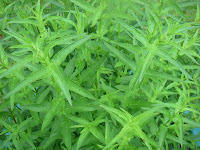A bat maternity colony monitoring project was held Wednesday, May 30th at White Memorial. The survey’s purpose is to identify and evaluate the size of bat maternity roosts. This is achieved by conducting an emergence count of a specific roost before the pups begin to fly and an additional count after the pups begin to fly (sometime during the month of July). The emergence count started at 7:30 pm right before dusk, when the bats start to leave their den to feed. James Fischer and I, the surveyors, stood on either side of the barn and counted all of the bats that emerge.
The site that we decided would be most appropriate to monitor a bat colony is the two-story, open barn, known as the Green Barn, that holds White Memorial’s truck, van, and miscellaneous landscaping tools. There is a well-known roost of Big Brown bats (Eptesicus fuscus) that occupy the ceiling of the barn. From 7:30 to 9:09 pm we counted a total of 127 bats emerging from gaps at the top edge of the barn. Big Brown bats have black wings with a brown furry back and paler fur below. They are a very common bat in Connecticut, and typically are found in forests, but they can also live in crevices of buildings and caves.
 |
| Green Barn where bat survey took place. |
 |
| Opening from which most of the bats emerged. |
It is important to document colony declines and losses to accurately track population change, especially to monitor the effects of White-Nose Syndrome, which since 2006, has killed over 5.7 million bats in Eastern North America. Bats play a crucial role in maintaining an ecosystem balance and consume thousands of mosquitoes and other insects every night.
This project is hosted by Connecticut DEEP Wildlife Division, who encourage volunteers to make counts wherever a bat colony is known to exist. Researching a wildlife disease is expensive, therefore more committed volunteers will help DEEP retain and use grant money to help combat this destructive disease.



















